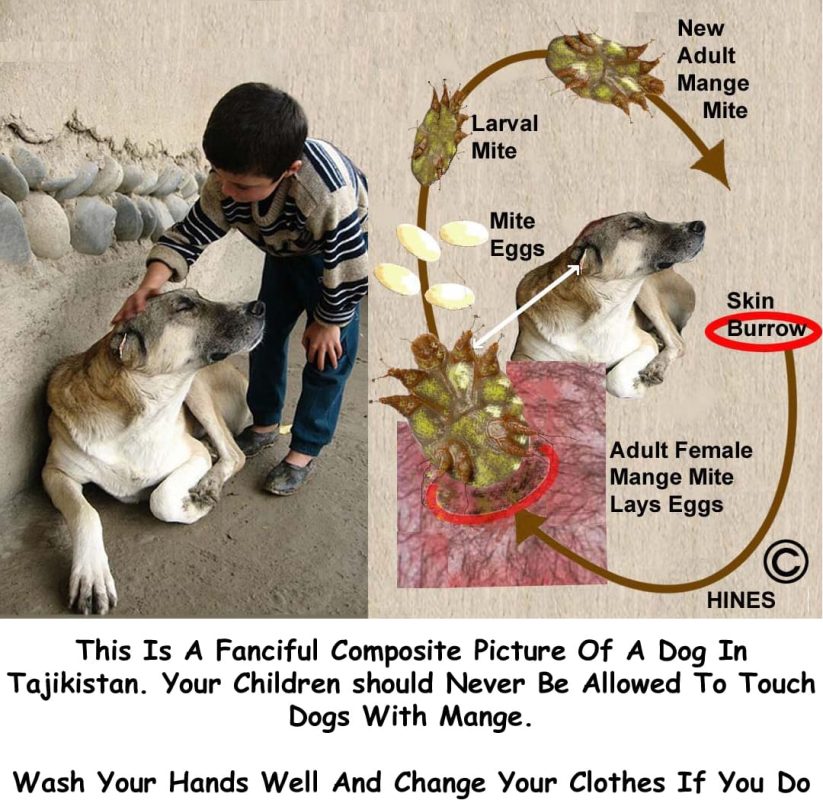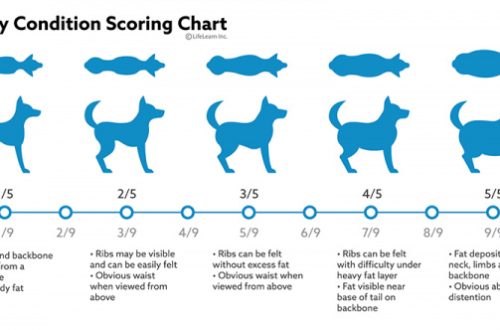
Scabies in Dogs: Symptoms and Everything You Need to Know About It
If a dog constantly itches, licks itself, and begins to shed its hair, you may suspect scabies, a disease that, although treatable, is sometimes contagious and can have serious consequences.
How scabies in dogs manifests itself – later in the article.
Contents
What is scabies in dogs
This is a skin disease caused by a tiny scabies mite, which belongs to the order of arachnids and is a close relative of the forest mite. There are two types of scabies that affect dogs: demodicosis, a non-contagious scabies, and sarcoptic mange, a contagious scabies.

- Demodecosis This type of scabies is caused by the opportunistic Demodex mite parasitizing the pet’s skin and hair follicles and is usually not a serious condition. These mites cling to the hair of people and animals that do not even notice it. Such a mite can cause scabies only with a very strong infection that suppresses the dog’s immune system, or with a weakened immune system that is not able to repel it. This leads to inflammation of the skin at the root of the follicle and, as a result, itching and hair loss. Demodicosis is usually not contagious and in most cases can be easily treated. It usually only affects unhealthy or older dogs.
- Sarcoptosis. This type of scabies is caused by the Sarcoptes mite, the same mite that causes scabies in humans. These mites “burrow” into the skin, causing severe itching, provoking subcutaneous scabies in the dog. Wool with this disease usually falls out not because of the scabies itself, but as a result of the fact that the dog constantly itches and bites itself. Although sarcoptic mange is treatable, it is highly contagious and can be transmitted to humans and other pets. If a pet is diagnosed with this type of scabies, it must be quarantined and disinfected in the house.
Signs and symptoms of scabies in dogs
Signs of scabies in dogs:
- Redness, rash and itching.
- Hair loss.
- Ulcers and lesions.
- Rough, crusted or scaly skin.
Both types of scabies can cause hair loss throughout the body, but with demodicosis, bald patches and itching are more often localized in small areas, usually on the muzzle, trunk and paws.
Diagnosis of scabies in dogs
Your veterinarian may perform a number of tests, including blood and urine tests, to rule out alternative causes of itching and hair loss, such as allergies or a metabolic disorder. Skin scrapings and examination of hair follicles can help determine the presence of scabies and the type of mite that caused it. Next, the doctor will tell you how to treat scabies in dogs.
Treatment of demodicosis
Quite often, demodicosis goes away on its own. More severe cases may require long-term medication and regular skin scrapings to track progress.
Since demodicosis can be a sign of impaired immunity, it may make sense to diagnose and treat any diseases that can cause a malfunction of the immune system.
Sarcoptosis treatment
Dogs with sarcoptic mange should be bathed with a special shampoo, usually once a week for four to six weeks. This is done under the supervision of a veterinarian and not at home. As some ticks develop resistance to certain drugs, it may be necessary to experiment a bit to find the most effective formula.
Your veterinarian can prescribe oral or topical medications and recommend remedies to boost your dog’s immune system.
The dog can be kept at home during treatment, but due to the contagious nature of this type of scabies, it must be isolated from other pets and family members. If you need to touch the dog, you need to do it with gloves and wash your hands thoroughly with soap and water after handling. Wash your dog’s bedding and any other fabrics or surfaces it has come into contact with, including your own bedding and clothing, furniture, curtains, and carpets.
If a person touches an infected dog, they may develop a purple rash on their hands or body. It should go away on its own at the end of your pet’s treatment. It is important that the dog feels as comfortable as possible during this time so that stress and anxiety do not weaken his immune system and reduce the effectiveness of treatment.
Questions to ask your veterinarian
If the owner suspects scabies in a pet, you should immediately contact a veterinarian. A skin scraping should be done to determine the presence of mites and their type and to understand how quickly you need to act to protect the dog and family members from infection. It is also necessary to exclude any alternative causes of skin problems and any other pathologies that could weaken his immune system.
In addition to prescribing antiparasitic medications and medications to treat symptoms, your veterinarian may recommend a special diet to boost your pet’s immune system. If a dog is diagnosed with demodicosis, it is necessary to clarify what other complications may arise due to weakened immunity. This will help you take steps to prevent or treat them.
Scabies isn’t usually as bad as it’s made out to be, but that doesn’t mean it should be taken lightly. Apart from the potential for contracting it, it is important to remember that this disease does not usually affect strong and healthy adult animals. Treating scabies in a dog can be the first step towards treating a more serious underlying condition, and it can even save a precious pet’s life.





